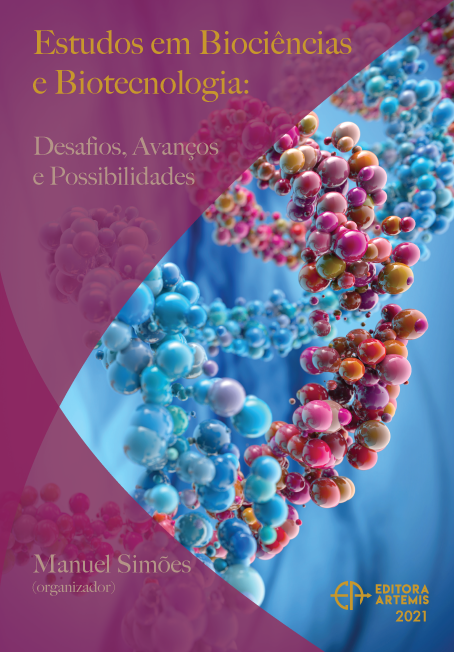
EFFECT OF Zinnia peruviana ROOT EXTRACT ON THE PRODUCTION OF MICROBIAL BIOFILMS
El aumento de la resistencia a los antimicrobianos constituye una creciente preocupación de la salud pública mundial. Un mecanismo por el cual los microorganismos adquieren resistencia a los antibióticos es la formación de biopelículas. Aproximadamente el 80% de las infecciones microbianas crónicas y recurrentes se deben a esta estrategia de resistencia producida por un grupo diverso de microorganismos. Este contexto ha motivado la búsqueda de nuevas sustancias antimicrobianas con actividad anti-biofilm. La extensa y variada flora de la Región Centro-Oeste de Argentina ofrece un importante recurso para el estudio de productos naturales en la búsqueda de antimicrobianos con potencial uso terapéutico en infecciones clínicas. Dentro de estas especies, Zinnia peruviana (L.), es una hierba con propiedades antimicrobianas demostradas en su parte aérea. El objetivo de este trabajo fue evaluar el efecto de la adición de extracto acetónico de raíces de Z. peruviana a distintas concentraciones sobre la producción de biofilm de L. monocytogenes, E. coli y C. albicans. La producción de biofilm se evaluó por determinación de la adherencia a microplacas de 96 pocillos fondo en U. El extracto ensayado inhibió el 29% y 50% de la producción del biofilm de L. monocytogenes con 0,625 mg ml-1 y 5 mg ml-1 respectivamente. Para E. coli la reducción fue de 33 % (0,625 mg ml-1) y 51% (0,078 mg ml-1) mientras que para C. albicans se observó una significativa reducción en la formación de biofilm con 3 concentraciones de extracto: 59 % (5 mg ml-1), 42 % (0,625 mg ml-1) y 44 % (0,078 mg ml-1). Todos los valores de reducción de la producción del biofilm presentaron diferencias estadísticamente significativas (p<0,05). La elevada actividad biológica de las raíces de Z. peruviana representa un potencial alternativo y alentador para el tratamiento y control de infecciones microbianas. Se necesitan más estudios sobre toxicidad y bioaplicación.
EFFECT OF Zinnia peruviana ROOT EXTRACT ON THE PRODUCTION OF MICROBIAL BIOFILMS
-
DOI: 10.37572/EdArt_2112215074
-
Palavras-chave: Zinnia peruviana, extracto acetónico de raíz, biopelículas microbianas
-
Keywords: Zinnia peruviana, acetonic root extract, microbial biofilms
-
Abstract:
The increase of antimicrobial resistance is a growing global public health. One mechanism by which microorganisms acquire resistance to antibiotics is the biofilms. Approximately 80% of chronic and recurrent microbial infections are due to this resistance strategy produced by a diverse group of microorganisms. This context has motivated the search for new antimicrobial substances with anti-biofilm activity. The extensive and varied flora of the Central West Region of Argentina offers an important resource for the study of natural products in the search for antimicrobials with potential therapeutic use in clinical infections. Within these species, Zinnia peruviana (L.), is an herb with proven antimicrobial properties in its aerial part. The objective of this work was to evaluate the effect of the addition of acetonic extract from the roots of Z. peruviana at different concentrations on the biofilm production of L. monocytogenes, E. coli and C. albicans. Biofilm production was evaluated by determining adherence to 96-well microplates U-bottom. The tested extract inhibited 29% and 50% of the biofilm production of L. monocytogenes with 0.625 mg ml-1 and 5 mg ml-1 respectively. For E. coli the reduction was 33% (0.625 mg ml-1) and 51% (0.078 mg ml-1) while for C. albicans a significant reduction in biofilm formation was observed with 3 concentrations of extract: 59% (5 mg ml-1), 42% (0.625 mg ml-1) and 44% (0.078 mg ml-1). All the biofilm reduction values showed significant differences (p<0.05). The high biological activity of the roots of Z. peruviana represents an alternative potential for the treatment and control of microbial infections. Further studies on toxicity and bioapplicability are needed.
-
Número de páginas: 14
- Ana Mariel Mohamed
- Diego Alberto Cifuente
- Sara Elena Satorres
- Claudia Maricel Mattana

